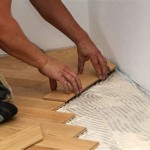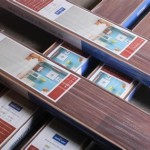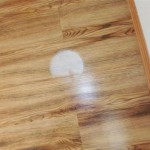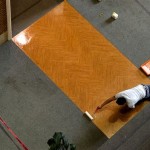Seaside Oak Laminate Flooring Reviews: A Comprehensive Examination
Seaside Oak laminate flooring, often characterized by its light, airy aesthetic, is a popular choice for homeowners seeking a durable and visually appealing flooring solution. This type of laminate aims to replicate the look of natural oak, typically incorporating light beige, gray, and white tones to evoke a coastal or Scandinavian ambiance. This article will delve into the key aspects of Seaside Oak laminate, evaluating its performance, aesthetics, installation, and overall value proposition.
Aesthetic Qualities and Design Versatility
The primary appeal of Seaside Oak laminate resides in its aesthetic qualities. The light color palette contributes to a bright and open feel within a space. These light tones can visually expand smaller rooms, making them appear larger. The imitation oak grain patterns, ranging from subtle to more pronounced, are generally treated with embossed-in-register (EIR) technology to enhance the realism. EIR technology aligns the texture of the laminate with the visual pattern, creating a more authentic wood-like surface.
The versatility of Seaside Oak extends to various interior design styles. It complements coastal, modern, Scandinavian, and even transitional decor schemes. The neutral color allows for flexibility in furniture selection and wall color choices. Depending on the specific shade and grain pattern, Seaside Oak can lean towards a more rustic or a more contemporary look. For example, a Seaside Oak laminate with a wider plank and a more pronounced grain pattern might be suitable for a rustic or farmhouse-style home. Conversely, a narrower plank with a smoother, less detailed grain could be preferred in a modern or minimalist setting.
It's important to consider the color variation within the laminate planks. Some Seaside Oak laminates exhibit a consistent color tone throughout, while others feature more variation, mimicking the natural inconsistencies found in real wood. This variation can add depth and character to the floor but might also require careful planning during installation to achieve a balanced look. Additionally, examine the finish of the laminate. Matte finishes tend to hide scratches and imperfections better than glossy finishes, which can showcase more wear and tear over time.
Durability and Performance Characteristics
Laminate flooring is inherently designed for durability, and Seaside Oak variations are no exception. The wear layer, a transparent, protective coating on the surface of the laminate, is crucial in determining its resistance to scratches, dents, and stains. The Abrasion Class (AC) rating, typically ranging from AC1 to AC5, indicates the laminate's durability. AC3 is generally considered suitable for residential use, while AC4 and AC5 provide enhanced durability for high-traffic areas and commercial applications. When evaluating Seaside Oak laminate, verify the AC rating to ensure it aligns with the intended use.
Water resistance is another critical factor. While laminate flooring is not waterproof, some Seaside Oak laminates are designed with enhanced water resistance properties. This might involve a tighter locking system between planks and a moisture-resistant core. Look for terms like "water-resistant" or "splash-proof" in the product description. However, it is crucial to understand that even water-resistant laminate should not be subjected to prolonged exposure to standing water. Spills should be cleaned up promptly to prevent damage. Some manufacturers offer waterproof laminate options that provide more protection against water damage, although these may come at a higher cost.
The thickness of the laminate plank also contributes to its durability and stability. Thicker planks tend to feel more solid underfoot and are less prone to flexing or warping. A thickness of 8mm or greater is generally recommended for residential use, while 12mm or thicker planks offer superior durability and sound absorption. The core material of the laminate, typically High-Density Fiberboard (HDF), also impacts its overall performance. HDF is denser and more resistant to moisture than Medium-Density Fiberboard (MDF), making it a preferred choice for laminate flooring.
Beyond resistance to scratches and water, Seaside Oak laminate should also be evaluated for its fade resistance. Prolonged exposure to sunlight can cause some laminates to fade over time. Look for laminates that are specifically treated to resist fading, particularly if the flooring is to be installed in areas with high levels of sunlight exposure.
Installation and Maintenance Considerations
One of the advantages of laminate flooring is its relatively straightforward installation process. Most Seaside Oak laminates utilize a click-lock system, which allows planks to be easily joined together without the need for glue or nails. This makes laminate a popular choice for DIY projects. However, proper subfloor preparation is essential for a successful installation. The subfloor must be level, clean, and dry before laying the laminate. Any imperfections in the subfloor can telegraph through the laminate, leading to unevenness and potential damage.
Acclimation is a crucial step in the installation process. Laminate flooring needs to acclimate to the room's temperature and humidity levels before installation. This typically involves leaving the planks in the room for 48 to 72 hours prior to installation. Acclimation helps to prevent expansion and contraction issues after the floor is installed.
The choice of underlayment is also important. Underlayment provides cushioning, sound absorption, and moisture protection. Some laminates come with pre-attached underlayment, while others require a separate underlayment to be installed. When selecting underlayment, consider the specific requirements of the laminate flooring and the subfloor conditions. For example, if the subfloor is concrete, a moisture barrier underlayment is necessary to prevent moisture from seeping into the laminate.
Maintaining Seaside Oak laminate is generally easy. Regular sweeping or vacuuming is sufficient to remove dirt and debris. For more thorough cleaning, a damp mop can be used with a laminate floor cleaner. Avoid using excessive water, as this can damage the laminate. Harsh chemicals and abrasive cleaners should also be avoided, as they can scratch the surface. Protective felt pads should be placed under furniture legs to prevent scratches and dents. With proper care and maintenance, Seaside Oak laminate flooring can maintain its beauty for many years.

Reviews For Blue Ridge Hardwood Flooring Northern Coast Seaside Oak 3 4 In T X 5 W Smooth Solid 20 Sq Ft Case Pg 1 The Home Depot

Konig Essence Pro Seaside Oak 12mm Wood Floor

Konig Essence Pro Seaside Oak 12mm Wood Floor

Konig Essence Pro Seaside Oak 12mm Wood Floor

Lifeproof Bailey S Beach Oak 22 Mil X 8 7 In W 59 L Lock Waterproof Luxury Vinyl Plank Flooring 25 Sqft Case I263101lx The Home Depot

Konig Essence Pro Seaside Oak 12mm Wood Floor

Reviews For Pergo Outlast Jetties Beach Oak 12 Mm T X 7 4 In W Waterproof Laminate Wood Flooring 19 63 Sqft Case Pg 5 The Home Depot

Lifeproof Bailey S Beach Oak 22 Mil X 8 7 In W 59 L Lock Waterproof Luxury Vinyl Plank Flooring 25 Sqft Case I263101lx The Home Depot

Konig Essence Pro Seaside Oak 12mm Wood Floor

Lifeproof Bailey S Beach Oak 22 Mil X 8 7 In W 59 L Lock Waterproof Luxury Vinyl Plank Flooring 25 Sqft Case I263101lx The Home Depot
Related Posts








